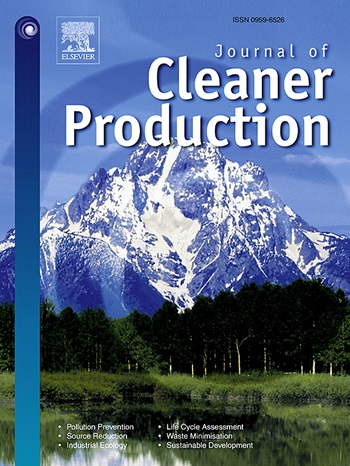通过臭氧氧化回收纺织印染废水:减少淡水和化学品消耗和降低运营成本的环境可持续方法
IF 9.7
1区 环境科学与生态学
Q1 ENGINEERING, ENVIRONMENTAL
引用次数: 0
摘要
纺织工业的染色作业需要大量的淡水,这给处理带来了挑战,并产生了高有机负荷的废水,难以处理,处理成本高。尽量减少淡水消耗对于采取可持续做法至关重要。有限数量的研究可在文献中探索通过臭氧氧化作为一种生态友好的方法回收染色废水的可能性。因此,本研究对活性红198 (RR198)和活性蓝21 (RB21)染料染色后的出水进行臭氧处理回收利用进行了研究。臭氧氧化15 min后,两种染料出水几乎完全脱色,COD去除率为32%。通过分光光度分析和色牢度试验,比较了再生染色织物与新鲜水染色织物的质量。每次循环后,两种染色织物的这些品质都处于优秀或良好的类别。在四次染色试验中,对淡水和化学品需求进行了比较分析,并节省了成本。研究表明,与传统的淡水染色相比,回收废水染色显著节省了60%的淡水使用量和75%的盐消耗量。因此,通过臭氧处理回收纺织印染废水是一种资源高效的方法。这种方法不仅大大减少了废水量,而且在不影响染色织物颜色相关质量的情况下减少了淡水需求。此外,它最大限度地减少了运营费用,从而支持纺织行业向可持续实践的转变。本文章由计算机程序翻译,如有差异,请以英文原文为准。
Recycling textile dyeing effluent through ozonation: An environmentally sustainable approach for reducing freshwater and chemical consumption and lowering operational costs
Dyeing operations in textile industries require large quantities of freshwater, which creates handling challenges and generates wastewater with high organic load that is difficult to treat and incurs high treatment costs. Minimizing freshwater consumption is essential for adopting sustainable practices. A limited number of studies are available in the literature exploring the possibility of recycling dyeing effluent through ozonation as an eco-friendly approach. Therefore, in the present work, the recycling of effluents obtained after dyeing with Reactive Red 198 (RR198) and Reactive Blue 21 (RB21) dyes through ozonation treatment has been studied. Nearly complete decolourization with COD removal efficiency of 32 % was obtained for both dye effluents after 15 min of ozonation. The qualities of recycled dyed fabrics were compared to fresh water-dyed fabrics through spectrophotometric analysis and colour fastness tests. These qualities for both dyed fabrics with recycled effluent were found to be either in excellent or good category after each recycle. Comparative analysis of freshwater and chemical requirements, along with cost savings, was conducted over four dyeing attempts. The study revealed significant savings with recycled effluent dyeing including 60 % reduction in fresh water usage and 75 % in salt consumption compared to conventional freshwater dyeing. Thus, recycling textile dyeing effluent through ozonation treatment was found to be a resource efficient approach. This approach not only significantly reduces wastewater volumes but also freshwater demand without compromising the colour-related qualities of dyed fabrics. Additionally, it minimizes operational expenses, thereby, supporting textile industry's shift toward sustainable practices.
求助全文
通过发布文献求助,成功后即可免费获取论文全文。
去求助
来源期刊

Journal of Cleaner Production
环境科学-工程:环境
CiteScore
20.40
自引率
9.00%
发文量
4720
审稿时长
111 days
期刊介绍:
The Journal of Cleaner Production is an international, transdisciplinary journal that addresses and discusses theoretical and practical Cleaner Production, Environmental, and Sustainability issues. It aims to help societies become more sustainable by focusing on the concept of 'Cleaner Production', which aims at preventing waste production and increasing efficiencies in energy, water, resources, and human capital use. The journal serves as a platform for corporations, governments, education institutions, regions, and societies to engage in discussions and research related to Cleaner Production, environmental, and sustainability practices.
 求助内容:
求助内容: 应助结果提醒方式:
应助结果提醒方式:


